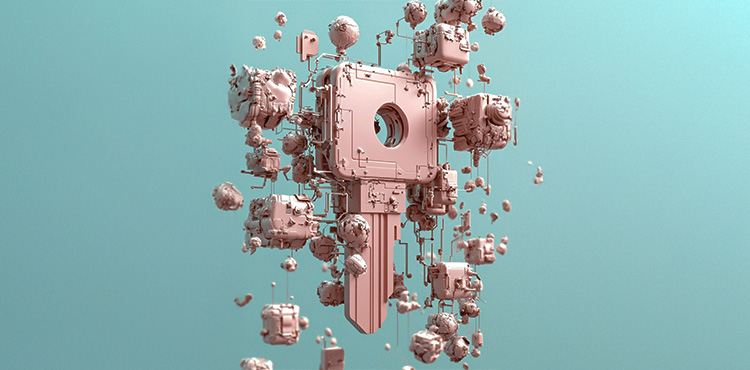Forget the dystopian future where robots snatch away every job. According to Anthropic’s latest deep dive into Claude AI usage, the future is more like a quirky buddy comedy, where humans and AI work side by side—at least for now. Their Economic Index unveils a fascinating twist on the typical human-AI relationship, showing that rather than replacing us, AI is more likely to become our trusted sidekick. At least until it learns to develop its own sense of humor.
Mapping AI Usage Across the Labor Market: Beyond the Buzzwords
The Anthropic Economic Index is no ordinary survey asking, “Hey, have you tried chatting with ChatGPT?” Instead, it gets right to the nitty-gritty, analyzing millions of anonymized conversations with their AI model, Claude. Think of it like digital eavesdropping—but for science! By focusing on specific tasks, thanks to the exhaustive O*NET database, Anthropic offers a deeper, almost spy-level look at how AI is infiltrating the workforce.
In their inaugural report, like a tech version of the U.S. Census, Anthropic highlighted a fascinating nugget: Over a third of occupations are already having AI help out with at least a quarter of their tasks. And guess where it’s most noticeable? Software development and technical writing. Sounds about right—who wouldn’t want a trusty AI assistant to battle with bugs or churn out yet another 20-page user manual?
The Augmentation Advantage: AI as Your Trusty Sidekick (for Now)
For those still clinging to their desk jobs in a post-AI world, there’s good news: AI isn’t planning an all-out takeover—yet. According to Anthropic’s data, 57% of AI usage is categorized as “augmentation,” meaning AI is more like your geeky, super-efficient coworker who makes your life easier. It’s a Batman and Robin situation—if Robin could whip up Python code, that is. Only 43% of AI use is heading down the automation rabbit hole, where robots are doing it all on their own. So, while it’s reassuring to think of AI as your co-pilot, one can’t help but wonder: Will AI eventually get tired of being the sidekick and go solo? Time—and more data from Claude—will tell.
Coding, Education, and Science: AI Joins the Party
Flash forward a couple of months, and the Anthropic Economic Index has got some fresh insights, courtesy of their shiny new Claude 3.7 Sonnet model. Drumroll, please! The headline? A surge in AI usage for coding (unsurprisingly), but wait for it—AI is also making waves in education, science, and healthcare. Maybe Claude is helping students study for finals, or sifting through mountains of data for researchers. Imagine it: “Claude, explain quantum physics—but make it sound like a pirate.” (We regret to inform you the report doesn’t confirm this request.)
Extended Thinking for the Tech Elite
Claude 3.7 Sonnet comes with an “extended thinking” mode, and let’s be real—it sounds impressive. Basically, it’s like having an extra brain—one that doesn’t need coffee breaks. This feature is mainly being flexed in the high-stakes, brain-busting world of tech. Software developers, computer science researchers, multimedia animators, and video game designers are the primary users of this mode, calling on AI for the heavy lifting when the problems get too complex for mere mortals. It’s like having a super-powered research assistant who doesn’t mind going down the rabbit hole of algorithms, all while maintaining impeccable focus.
The Nuances of Collaboration: Human-AI Task Dynamics
The updated report also digs deep into how humans and AI actually work together on specific tasks. For example, copywriters and editors are clearly enjoying a little “co-writing” with Claude. It’s as if the AI serves as a trusty first-draft generator or an idea sounding board, while humans add the final touch of finesse. On the flip side, translators and interpreters seem to be using Claude more for direct task completion—like handing over the reins for the nitty-gritty work. But, as with anything in language, it raises the question: Will AI eventually master the fine art of interpreting tone and cultural context? If it does, we might need to rethink what it means to be a “human expert.”
Beyond the Anthropic Bubble: A Wider Look at AI in the Workplace
Of course, the Anthropic Economic Index is just one slice of the AI pie. The broader landscape of AI in the workplace is constantly evolving, and other reports are chiming in with similar trends. Take McKinsey, for example. Their (hypothetical) study predicts that generative AI is going to take over a fair share of routine marketing tasks—but don’t worry, humans are still needed for strategic planning and injecting creative flair. So while AI is undeniably powerful, it’s not a monolithic force. It’s more like a Swiss Army knife, with different tools for different jobs.
The Ironic Twist: Will We Become AI Whisperers?
Here’s a fun thought: One of the most ironic twists of this whole AI revolution might be that we humans could evolve into “AI whisperers.” Our job could shift from directly doing tasks to expertly guiding and prodding AI toward the right solutions. Imagine yourself as a digital conductor, orchestrating a symphony of algorithms. Sounds cool, right? But it also raises a question: If we start relying too much on AI, will we lose the ability to do things like write compelling copy or debug that annoying piece of code without our trusty AI sidekick? Is AI making us better or just lazier?
Limitations and the Path Forward
It’s important to keep in mind the limitations of the Anthropic Economic Index. After all, it only analyzes conversations with Claude, so it doesn’t capture the full scope of AI tools currently being used in the economy. Plus, the data is anonymized, so we don’t get to know exactly *who* is using AI for what (though we can imagine). Despite these gaps, the Index gives us an unprecedented peek into how one leading AI model is impacting the real-world workforce. And as Anthropic releases regular updates, we’ll get to track how AI adoption continues to evolve over time. Who knows? In a few years, we might be wondering how we ever worked without AI in our corner.
Key Takeaways:
- The Anthropic Economic Index offers a fascinating, data-driven look at AI’s role in the workplace by analyzing millions of conversations with Claude AI. It’s like a backstage pass to how AI is really being used, beyond the buzzwords.
- AI usage is currently concentrated in software development and technical writing, with new data showing it’s also taking hold in coding, education, science, and healthcare. Talk about a growth spurt!
- Augmentation is the dominant form of AI interaction, with 57% of use cases involving AI collaborating with humans. So, for now, it’s all about teamwork—AI as the helpful sidekick, not the villain.
- Claude 3.7 Sonnet’s extended thinking mode is primarily used for complex tasks, suggesting AI’s growing role in advanced problem-solving. When the going gets tough, AI gets going.
- The Anthropic Economic Index offers incredible insights, though it’s limited to Claude’s conversations. Still, it paints a valuable picture of AI’s evolving relationship with the workforce, and it will be fascinating to see how these trends play out over time.





